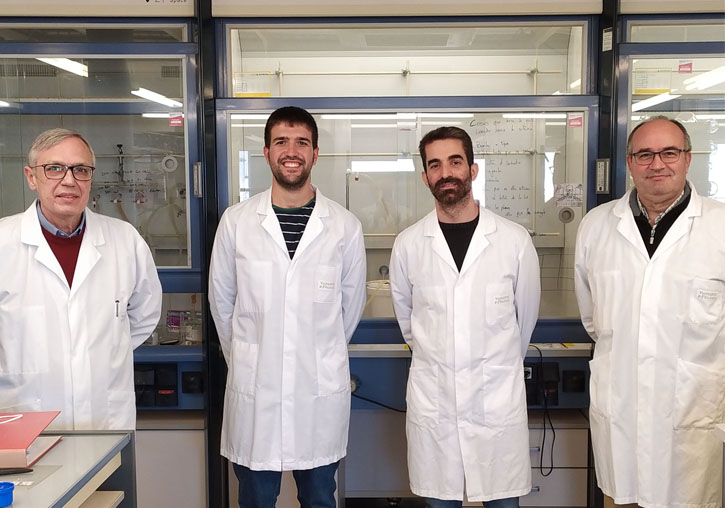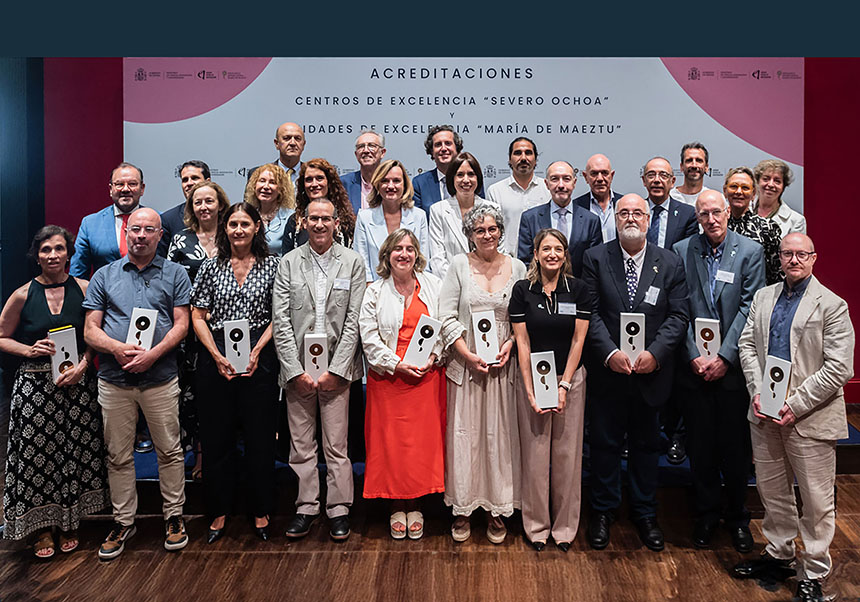Chemists of the University of Valencia review the methodology of an important reaction in the design and synthesis of drugs
- Scientific Culture and Innovation Unit
- December 2nd, 2020

The ASYMCAT research group, from the Department of Organic Chemistry of the University of Valencia (UV), has gathered in a review article all the information on asymmetric Mannich oxidative reactions, a set of chemical reactions that allow obtaining relevant compounds in the design of a broad set of drugs. The review, which has been published in the journal Advanced Synthesis & Catalysis (ASC), describes three methodologies used to transform amines – a type of organic chemical compounds derived from ammonia – into the corresponding reaction products, chiral β-aminocarbonyl compounds.
The review, led by UV professor José Ramón Pedro, has described the procedures used in recent years to carry out the asymmetric Mannich oxidative reaction. These reactions make it possible to obtain chiral β-aminocarbonyl compounds – non-superimposable compounds, in the same way as the right and left hands – that are relevant for the pharmaceutical industry and chemical synthesis.
“The Mannich reaction is a chemical transformation that is more than 100 years old. However, asymmetric variants have been described recently and, in particular, the examples of reactions described here are limited to the last 12 years. Therefore, it is a very topical chemistry and proof of this is the publication of this article in ASC, a prestigious journal both in the area of Organic Chemistry and Applied Chemistry, and which has been classified by the editor as Very Important Paper”, highlights José R. Pedro.
The Mannich reaction consists of the reaction of an enolisable carbonyl compound, which acts as a nucleophile, and an imine which acts as an electrophile. Globally, it is an amino-alkylation reaction and constitutes one of the main methodologies for the selective synthesis of chiral amines, which are of great importance in the manufacture of pharmaceutical products, since the different chiral forms of a molecule usually have a biological activity different.
The work, in which Carlos Vila, Gonzalo Blay and Jaume Rostoll have participated, aims to develop a practical guideline that can serve to select the reaction conditions for a specific transformation. “When making the corresponding bibliographic review on this type of transformation, we realised that, despite having many examples described, there was no compilation of articles made. Therefore, we think it would be useful to prepare a review of the examples described in the bibliography”, tells us Jaume Rostoll, FPU predoctoral researcher.
“Imines are normally used in this reaction, but this type of electrophiles has some disadvantages, so an alternative is their preparation in situ from imines, by means of catalytic or stoichiometric oxidation”, explains Carlos Vila, Ramón y Cajal researcher. Therefore, the types of Mannich reactions have been classified according to how the oxidation process is carried out, which will be followed by a second asymmetric induction stage.
The oxidation of the amine can be carried out directly using a stoichiometric oxidant – a suitable ratio between reactants and products – or by means of a catalytic cycle – a multi-stage reaction in which a substance is used that accelerates the chemical reaction – together with an oxidant. Within this last approach, strategies such as electrochemistry (transformation of electrical energy into chemical energy) or photoredox catalysis (use of light energy to accelerate a chemical reaction) stand out.
“The Mannich reaction is a procedure of great importance for the synthesis of chiral nitrogen compounds that have a wide application in the pharmaceutical industry. This article collects and discusses the most recent procedures developed for this reaction and will undoubtedly become an important reference for all organic chemists”, points out Gonzalo Blay, Professor of Organic Chemistry. The review has been funded by the State Research Agency (AEI) and the European Regional Development Fund (ERDF).
Article: Rostoll‐Berenguer, J., Blay, G., Pedro, J. R. i Vila, C. (2020), «Asymmetric Oxidative Mannich Reactions». Adv. Synth. Catal. https://doi.org/10.1002/adsc.202001017
File in: Investigació a la UV , Internacionalització recerca , Difusió i comunicació científica , Facultat de Química , Cultura Científica , Grups de recerca , Producció científica
















